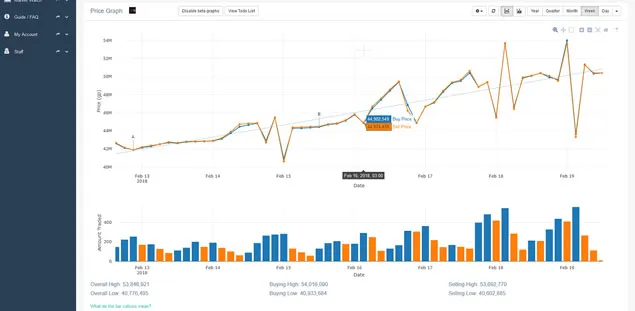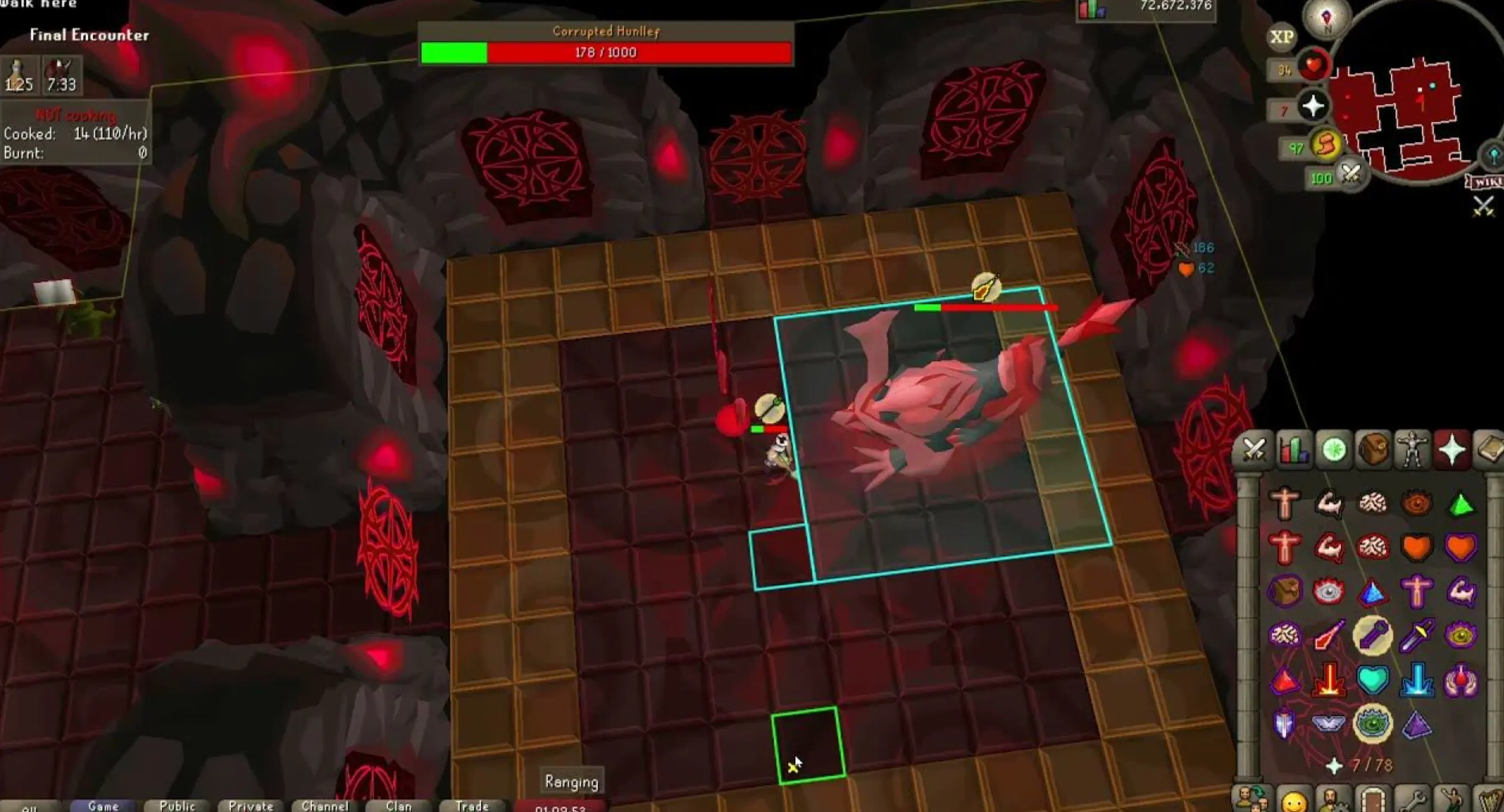Your cart is empty
The Active Trading Prices of OSRS GE: A Complete Guide

The Grand Exchange (GE) in Old School RuneScape (OSRS) serves as a central trading hub where players can buy and sell items. Understanding how the GE operates is crucial for active traders aiming to maximize their profits. This guide will delve into the mechanics of the Grand Exchange and the key factors that influence item prices, providing valuable insights for both novice and experienced traders.
The Grand Exchange in OSRS is a marketplace that enables players to trade items without needing to find a buyer or seller in the game world. Players can list their items for sale or buy items listed by others, creating a dynamic trading environment. Each item has a current price based on supply and demand, which fluctuates based on player activity. The GE allows players to set their own prices or choose the current market price, making it easier to manage their trades efficiently.
Players can access the Grand Exchange through specific locations in the game, primarily in Varrock. Once at the GE, players can use the interface to search for items, check their prices, and execute trades. The Grand Exchange tracks item prices over time, allowing players to analyze trends and make informed trading decisions. The price of an item can change rapidly based on various factors, including player demand, updates to the game, and even real-world events that affect player behavior.
The Grand Exchange also offers a limit on the number of items a player can buy or sell at once, which is important for managing inflation and ensuring that the market remains stable. The system is designed to protect players from significant losses due to sudden price drops, encouraging a more strategic approach to trading.
Factors Influencing Item Prices

Several factors influence item prices in the Grand Exchange, with player demand being the most significant. When a new update introduces items or changes mechanics that make certain items more desirable, demand increases, driving prices up. Conversely, if an item becomes less useful or is replaced by a better alternative, demand may drop, causing prices to fall.
Another critical factor is the overall supply of an item. Items that are rare or difficult to obtain tend to maintain higher prices compared to common items. Conversely, if more players are gathering a specific resource or crafting a particular item, the increased supply can lead to price drops. Seasonal events, holidays, and in-game promotions can also affect item availability and, consequently, prices.
Market trends and player speculation play a significant role in price fluctuations as well. Traders often monitor the market for patterns, buying low and selling high to maximize profit. This speculative trading can lead to price bubbles, where an item’s price skyrockets due to hype before crashing back down to a more stable level.
Lastly, external factors such as player engagement, community events, and occasional updates to the game can also impact trading behavior. Understanding these factors is essential for anyone looking to navigate the Grand Exchange successfully and make informed trading decisions.
How to Track Actively Traded Prices
Tracking actively traded prices in Old School RuneScape (OSRS) can be a daunting task, but with the right tools and methods, it becomes much easier. Here’s how you can stay on top of the fluctuating prices in the Grand Exchange:
1. Utilize In-Game Tools: OSRS provides players with an in-game Grand Exchange interface. You can check the current prices of items by simply searching for them in the exchange. This is a great starting point.
2. Visit Fan-Made Websites: There are several websites dedicated to tracking OSRS prices. Some popular ones include:
3. Use Price Tracker Tools: Many of the fan-made websites offer tools that allow you to track price trends over time. You can set alerts for specific items when their prices enter your desired range.
4. Join Community Forums: Engaging with the OSRS community on platforms like Reddit or Discord can provide insights into price trends. Players often share their experiences and tips about what items are currently in demand.
5. Analyze Market Fluctuations: Keep an eye on the Grand Exchange for spikes or drops in prices. This can often be attributed to in-game events, updates, or changes in player behavior.
Top Actively Traded Items in OSRS
Understanding which items are actively traded can significantly enhance your trading strategy. Here are some of the top items that see high volumes of trade in the OSRS Grand Exchange:
| Item | Average Price | Trade Volume |
|---|---|---|
| Blood Rune | 150 GP | 1,000,000 |
| Sharks | 1,000 GP | 500,000 |
| Super Restore Potion | 2,500 GP | 300,000 |
| Dragon Bones | 4,000 GP | 200,000 |
| Grapes | 900 GP | 400,000 |
Conclusion: Keeping track of actively traded items helps you make informed decisions when buying and selling. Prices can fluctuate based on updates, events, and the general economy within the game. Always stay updated and adapt your trading strategies accordingly!
5. Strategies for Buying and Selling on the GE
When it comes to navigating the Grand Exchange (GE) in Old School RuneScape (OSRS), having a solid strategy for buying and selling items can make a substantial difference in your profit margins. Here are some effective strategies to consider:
- Market Research: Always start by researching the current market prices. Use websites or tools that track GE prices to get an idea of what items are trending.
- Buying Low, Selling High: This classic trading strategy involves purchasing items at a lower price and selling them at a higher price. Timing is key—look for items that are undervalued.
- Flipping: This is where you buy an item and quickly sell it for a profit. Focus on high-demand items that have a stable price, allowing you to flip them multiple times.
- Diversification: Don’t put all your eggs in one basket. Spread your investments across various items to minimize risk.
- Patience is Key: Sometimes, it pays to wait. If you see an item you want to sell but the price is low, hold onto it until demand increases.
By employing these strategies, you can enhance your trading skills and increase your profits in the GE.
6. Utilizing Price Trends for Maximum Profit
Understanding price trends is crucial when trading on the Grand Exchange. By analyzing how prices fluctuate over time, you can make informed decisions that maximize your profits. Here’s how to effectively utilize price trends:
- Historical Data Analysis: Look at the price history of items. Many players use websites that provide graphs and charts showing price trends over days, weeks, or even months.
- Seasonal Trends: Be aware of seasonal trends that might affect prices. For example, certain items may spike in demand around holidays or during in-game events.
- News and Updates: Keep an eye on OSRS updates or news. Changes to the game can affect supply and demand dynamics, thus altering prices.
- Buying during Dips: If you notice a significant price drop for a popular item, it may be a great opportunity to buy low before prices bounce back.
- Tracking Competitors: Observe what other traders are doing. If many players are selling an item for a particular price, it could indicate a price floor or ceiling.
By staying informed and proactive about price trends, you can position yourself for greater profits in the ever-changing marketplace of the GE.
Common Mistakes to Avoid in GE Trading
When diving into the world of Grand Exchange (GE) trading in Old School RuneScape (OSRS), it’s easy to stumble into some common pitfalls. Avoiding these mistakes can save you time and gold in the long run. Here are a few key errors to steer clear of:
- Ignoring Market Trends: Players often rush to buy or sell without considering current trends. Always check the price history before making a transaction.
- Overreacting to Price Fluctuations: The market can be volatile, and prices can change rapidly. Stay calm and observe patterns instead of reacting impulsively.
- Failing to Diversify: Putting all your gold into a single item can be risky. Diversify your portfolio to minimize losses if one item’s price drops.
- Neglecting Supply and Demand: Understanding the basic economics of supply and demand is crucial. If an item is oversaturated in the market, its price will likely fall.
- Not Utilizing Price Checkers: Using third-party tools or price checkers can provide valuable insights. Don’t forget to leverage these resources for informed decisions.
- Being Unaware of Item Updates: Game updates can significantly affect item prices. Always stay informed about patch notes and changes that could impact the market.
By avoiding these common mistakes, you can enhance your trading strategy and become more successful in the OSRS GE.
Resources for Staying Updated on GE Prices
Staying informed about the latest GE prices is crucial for successful trading in OSRS. Fortunately, there are various resources available that can help you keep your finger on the pulse of the market. Here are some of the best options:
- Official OSRS Wiki: The wiki provides a comprehensive database of item prices and historical data. Regularly check the OSRS Wiki for updates.
- Price Tracking Websites: Websites like RSBuddy and GE Tracker allow you to track live prices and trends.
- Discord Communities: Joining OSRS trading communities on Discord can provide real-time insights and tips from seasoned traders.
- YouTube Channels: Many OSRS YouTubers focus on trading guides and market analysis. Channels like Flipping Old School offer valuable information.
- Reddit Threads: The OSRS subreddit can be a good source of information for price trends and trading advice. Engaging in discussions can help you learn from others.
By utilizing these resources, you can enhance your trading game and make well-informed decisions in the Grand Exchange.
The Active Trading Prices of OSRS GE: A Complete Guide
The Grand Exchange (GE) in Old School RuneScape (OSRS) is a bustling marketplace where players can buy and sell items. Understanding the active trading prices is crucial for maximizing profits and efficiently trading within the game. This guide provides a comprehensive look at how to navigate and utilize the trading prices effectively.
Active trading prices in the OSRS GE fluctuate based on supply and demand. Here are some key factors that influence these prices:
- Player Activity: High player activity can lead to increased demand for certain items, driving prices up.
- Updates and Events: Game updates or events can change the desirability of items, affecting their prices.
- Item Rarity: Rare items tend to have higher prices due to limited availability.
- Market Trends: Keeping an eye on market trends can help predict price movements.
To help traders make informed decisions, consider the following aspects:
| Item Name | Current Price | Trend |
|---|---|---|
| Dragon Scimitar | 1,000,000 GP | ↑ |
| Zamorak Godsword | 2,500,000 GP | → |
| Partyhat | 20,000,000 GP | ↓ |
Using tools like price-checking websites and forums can also provide valuable insights into current trading prices. Remember to always compare prices before making transactions, ensuring you get the best deals possible.
Conclusion: Mastering the OSRS GE trading landscape requires understanding market dynamics, keeping up with trends, and utilizing resources effectively. By staying informed about active trading prices, players can enhance their trading strategies and achieve greater success in the game.

